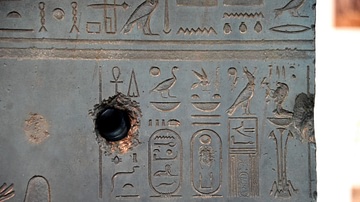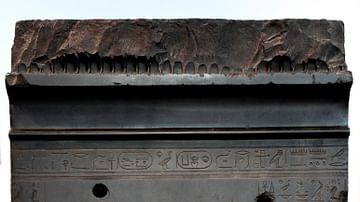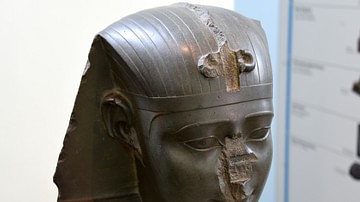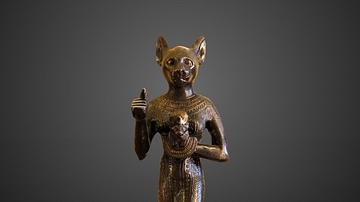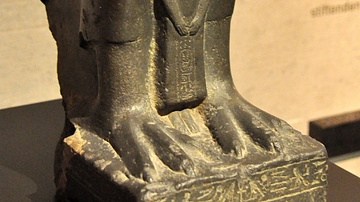Illustration
The sarcophagus was prepared for Egypt's last native pharaoh, Nectanebo II. Nectanebo's reign was cut short in the year 343 BCE, when the emperor Artaxerxes III restored Egypt to Persian rule. Nectanebo fled south, never to regain control. A decade later, the Persian Empire was overrun by Alexander the Great who boosted his title to Egypt's throne by claiming that Nectanebo was his father. In medieval times, the sarcophagus was reused as a ritual bath in the Atttarin Mosque at Alexandria (formerly the church of St. Athanasius, Plugholes were drilled at the bottom. The outside of the sarcophagus bears sections from a body of texts called Amduat, literally "that which is in the underworld". They describe the sun-god's nightly journey through the realm of Osiris, with 12 hours corresponding to different regions and challenges. The dead king would share in the deity's endless cycle of overnight regeneration The inside bears figures of funerary gods (now eroded), including Anubis, the Sons of Horus, and Isis and Nephthys at the head and foot ends. 30th Dynasty, reign of Nectanebo II, circa 360-343 BCE. From Attarin Mosque at Alexandria; originally from Samannud, Egypt. (The British Museum, London).
About the Author
Cite This Work
APA Style
Amin, O. S. M. (2016, July 18). Sarcophus of Nectanebo II. World History Encyclopedia. Retrieved from https://www.worldhistory.org/image/5340/sarcophus-of-nectanebo-ii/
Chicago Style
Amin, Osama Shukir Muhammed. "Sarcophus of Nectanebo II." World History Encyclopedia. Last modified July 18, 2016. https://www.worldhistory.org/image/5340/sarcophus-of-nectanebo-ii/.
MLA Style
Amin, Osama Shukir Muhammed. "Sarcophus of Nectanebo II." World History Encyclopedia. World History Encyclopedia, 18 Jul 2016, https://www.worldhistory.org/image/5340/sarcophus-of-nectanebo-ii/. Web. 16 Apr 2025.



